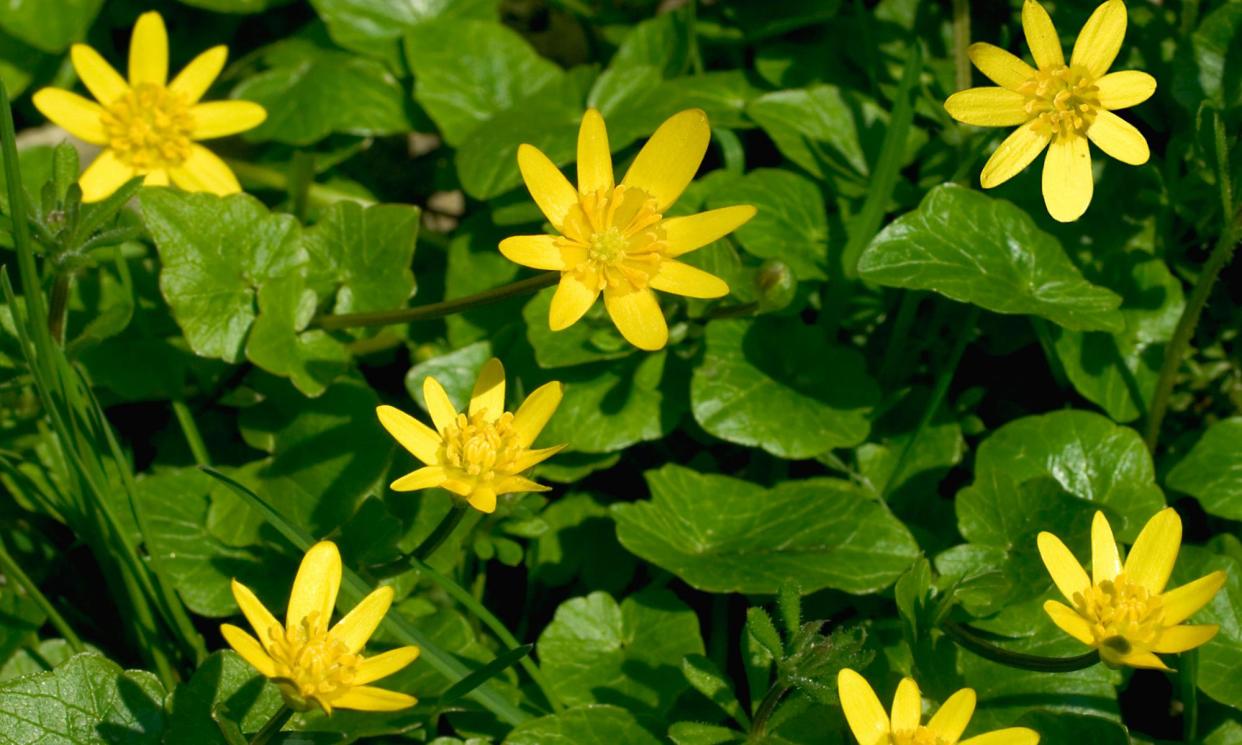Country diary: Standing up for the lesser celandine, a truly sensitive flower

William Wordsworth’s best‑known poem may be addressed to daffodils, but his favourite flower in the year’s bright early succession was the lesser celandine. It’s a preference I share. On the whole, gardeners and botanists do not. Those I’ve canvassed for their opinion regard its cold-months, late-February-to-early-May profusion along verges and across lawns with something approaching disdain. I view it as our native miniature tournesol, or sunflower, following the brief sallies of sunlight, clamming up and drooping under the grey skies of a Welsh spring.
Here along the sodden vernal lanes of Radnorshire, its mounded growths of heart-shaped leaves and its vivid golden flowers on frail stems are ubiquitous, bringing a stellar texture to roadside banks and meadows. They impart and enrich the winter-grey grasses with sun‑tones before primroses and daffodils are fully in flower, then age before our eyes to a blanched drabness that still retains the charm of heart-shaped petals to complement its fleshy leaves.
Related: Country diary: Time for the arable weeds to shine
There is something about the lesser celandine that resonates with our own blossoming and fading. From its gold-spangled profusion across every field, along the banks of each sunken lane at the earliest hint of spring, here’s a flower that is responsive to every climatic vagary the season can offer. Small wonder that Wordsworth thrilled to its responsiveness. He took it as correlative to his own sensitivity to nature and, in espousing its cause, defended it against an apparent disregard in English verse that paralleled the one he had suffered in that sphere.
It’s an odd flower – so delicate to be flowering in the harshest of seasons, so slight, and yet so vivid. Wordsworth actually wrote three poems to it, all of them fine and complex verses. He doesn’t mention the wealth of names bestowed on it (my favourite is “spring’s messenger”), nor does he refer to its exposed pale tubers, cabbage-scented, from which another name tells us of folk‑medicine usage: “pilewort”.
Such a wealth of cultural texture attached to this glowing early visitant! Enjoy it this year while you can, for its heliophilic brilliance is already fading, and you will have to wait till late February of 2025 to rejoice in it again.
• Country diary is on Twitter at @gdncountrydiary


